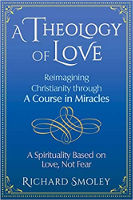
In 1909, the Belgian scholar Franz Cumont wrote about the Roman world of the early fourth century AD:
A hundred different currents were pulling jolted and recalcitrant minds in all directions; a hundred opposed teachings were appealing to the human conscience. Imagine that, in modern Europe, we saw the faithful abandon Christian churches to worship Allah or Brahma, follow the precepts of Confucius or Buddha, or adopt the maxims of Shinto. Picture a great confusion of all the races of the world, where Arab mullahs, Chinese scholars, Japanese bonzes, Tibetan lamas, and Hindu pundits were preaching, all at the same time, fatalism and predestination; the cult of ancestors; veneration of the divine sovereign; or pessimism and deliverance through annihilation. In our cities, these priests would erect temples in exotic architectures to celebrate their various rites. This dream, which will perhaps become reality in the future, offers us a reasonably accurate image of the religious chaos in which the ancient world was floundering before Constantine.
Franz Cumont was right to suppose that the same thing might happen in the modern West, because it did. The world of Western religion today is very much the farrago he describes.
When Cumont mentions Constantine, he is talking about the Roman emperor Constantine’s Edict of Milan, decreeing toleration of Christianity in 313 and leading to its eventual triumph as the official religion of the Roman Empire.
To the citizens of Constantine’s realm, the empire was the world; even the learned had only a dim idea of what went on outside the bounds of the imperium. And one man was the ruler of this world. He could decree sweeping reversals of laws and customs, and they would be enforced.
There is (fortunately) no such world ruler today. So, like all analogies, this one cannot be pressed too far. But it does lead us to ask: is the world looking for a new religious vision that will surpass those of the world religions just as the latter surpassed the old religion of animal sacrifice? I believe it is.
We might ask what this new synthesis might be like. In the first place, it may not look like a religion in our sense of the word. The priests of the Age of the Father, whose job centered on sacrifice, would probably not have recognized their successors as religions. One of the charges the pagan Romans leveled against the Christians was atheism. In the second place, it will almost certainly not be a mere synthesis of the current religions, as is sometimes imagined. It will go as far past them as the Age of the Son went past the Age of the Father.
An Internalization of The Divine
The Theosophist G. R. S. Mead, writing in 1906, characterized this perspective as “Gnosis”:
I doubt that the Gnosis of the new age will be new. Certainly it can be set forth in new forms, for the forms can be infinite. . . . Indeed, if I believe rightly, the very essence of the Gnosis is the faith that man can transcend the limits of the duality that makes him man, and become a consciously divine being. The problem he has to solve is the problem of his day, the transcending of his present limitations.
In 1954, Jung, who was influenced by Mead, wrote that in the new age “man will be essentially God and God man."
In one sense, this is nothing new: for two thousand years, Christianity has been proclaiming the coming of the God-man. But here I think it will mean something different. As the Course [A Course in Miracles] says, we will discover that each of us is the Son of God: Jesus Christ differed only in discovering that truth first.
Thus the Self dwelling within will be recognized, not as God in the transcendent sense, but as the point of contact between the human individual and God. In short, worship of the external God without will be replaced (or complemented) by the knowledge of the presence of the God within.
Up to now, personal observance in Christianity has mostly taken the form of petitionary prayer. But the swell of interest in meditation suggests that the faith of the coming age will have more to do with inner silence and concentration than with verbal utterances—and with opening oneself up to direct experience of the divine.
The sacred scriptures of the world offer tremendous resources and insights, but these are obscured once the focus is laid upon the letter of law and upon taking everything in scripture as explicit commands. (Notice how this process took place in regard to the epistles of Paul, who said he was not interested in laying down new sets of rules.)
Evidence of an Age of the Holy Spirit?
If I am talking about an Age of the Holy Spirit, I have to deal with the biggest piece of evidence on its behalf in present times: Pentecostal and charismatic Christianity, which are inspired by an outpouring of the Holy Spirit. I could hardly ignore it in any case: one frequently cited statistic says that there are 500 million Pentecostals worldwide (a quarter of all Christians), with some 80 million in the United States. The movement is estimated to be increasing at a rate of 13 million people a year, with growth particularly strong in regions as far-flung as Latin America, Africa, and Southeast Asia.
The roots of the American Pentecostal movement go back to Holiness revivals held after the Civil War. But its present-day origin has usually been traced to an “infilling of spirit” that one William J. Seymour claimed to have during a revival at a private home in Los Angeles in 1906. Several days later he had a similar experience, and others joined in. News of the event spread fast.
An article in the Los Angeles Times from April 18, 1906 (coincidentally, the same day as the great San Francisco earthquake), described the movement in an article headlined “A Weird Babel of Tongues: New Sect of Fanatics Is Breaking Loose.” Believers rented an abandoned church on Los Angeles’s Azusa Street, forming the first Pentecostal congregation. Donald Miller of the University of Southern California describes how the movement was spread by missionaries who “were able to communicate with people in plain language, and they followed the practice of Jesus’ disciples by casting out demons, healing the sick and experientially demonstrating the truth of the Christian gospel.”
Miller’s comments explain the movement’s popularity. Its beliefs are simple and fundamentalist: the divinity of Christ, the vicarious atonement, the immanence of the Second Coming. These doctrines, hard for an intellectual to swallow, appeal to many people because they are set out simply and plainly. As such, they are easy to grasp (provided one does not attempt to sort through their contradictions) and far from the complicated and equivocal theology of mainstream Protestantism. Furthermore, Pentecostal manifestations of the spirit—speaking in tongues, healing, casting out demons—resemble what Christ and his disciples did, according to the New Testament.
Is The Holy Spirit Present In These Gatherings?
It is hard to draw a line between the ecstasy of a Pentecostal congregation and the enthusiasm of a rock concert or of a stadium full of sports fans, if only because the collective psychology of humanity—particularly of crowds and mobs—is poorly understood. But the astonishing spread of Pentecostal movements in little over a hundred years testifies on behalf of some genuine spiritual outpouring.
American Pentecostalism parallels the New Thought movement. New Thought, which arose in the mid-nineteenth century, said that mind was the primary force in healing: Christian Science is its most famous example. The Course resembles New Thought in insisting that healing is of the mind alone, although the Course also says that the student should not reject standard medical procedure if doing so would cause fear.
Physical medications are forms of ‘spells,’ but if you are afraid to use your mind to heal, do not do so. The very fact that you are afraid makes you vulnerable to miscreation. . . . Under these conditions, it is safer for you to rely temporarily on physical healing services (T, 25).
The Prosperity Gospel
In the twentieth century, New Thought turned more and more toward prosperity. Its chief slogan is summed up in the 1938 best seller by Napoleon Hill—Think and Grow Rich.
Pentecostalism too has taken up the prosperity gospel—the belief that God not only wants to save your soul, but wants you to become rich. Much like Weber’s Protestant ethic, it regards wealth as a sign of divine favor.
Mitch Horowitz, author of One Simple Idea: How Positive Thinking Reshaped Modern Life, contends that Oral Roberts was the key figure in this transition. While earlier Pentecostalism promoted healing through spirit, “the Oklahoma-based minister and university founder began emphasizing prosperity over healing. Hence, Pentecostalism traveled the same trajectory as New Thought, shifting its focus from healing to prosperity.”
According to the prosperity gospel, wealth—your share of the limit-less abundance of the universe—is your birthright. Joe Vitale, a promoter of this approach, says:
Your job is to declare what you want from the catalogue of the Universe. If cash is one of them, say what you would like to have. “I would like to have twenty-five thousand dollars, unexpected income, in the next thirty days,” or whatever it happens to be.
Of course this sounds crass, but then sometimes you do need a certain amount of money in a certain amount of time (taxes, medical bills). In that case you will probably pray for it whether somebody else thinks you should or not.
In any event, some say the Course teaches the prosperity gospel. In their book Prayer: A History, Philip and Carol Zaleski lump it in with teachings of this kind, claiming: “Prayer for good things such as health, happiness, prosperity, and love is their stock-in-trade.”
But the Course does not tout a prosperity gospel. According to the Course, such things are worthless because the world is worthless:
You really think that you would starve unless you have stacks of green paper strips and piles of metal discs. You really think a small round pellet or some fluid pushed through your veins through a sharpened needle will ward off disease and death. . . . It is insanity that thinks these things. (W, 134)
The Course teaches that the Holy Spirit will provide for your needs, but not because the universe will deliver your order like a fast-food clerk. When it speaks of miracles, it is not talking about Rolls-Royces materializing in your driveway. Those who think the Course teaches the prosperity gospel have not read it carefully.
The Pentecostal Surge: A Thirst For Spiritual Experience
The Pentecostal surge ties in to what I said at the start of this book. In the first place, there is a terrible thirst for spiritual experience; it is a fundamental human need and, like all such needs, will find ways of fulfilling itself. In the second place, this experience is usually devoid of theological content. Jesus may appear to a man and tell him to clean up his life, but he will probably not go into detail about what the man should believe.
Pentecostalism has a number of the features I have sketched out for a religion of the coming age. With its outpourings of the Holy Spirit, the movement does point toward an internalization of the divine. It sees inner experience as the center of religion. Ritual too is looser and more ad hoc.
Other features are absent. Pentecostal ethics are rooted in the Bible as narrowly understood. The charismatic clergy are often more domineering than their conventional counterparts. Beauty is no more prized than it is in the rest of the bleak landscape of American mass culture. There is no universalism: Jesus and only Jesus is the way. For many people, this fundamentalism, rigid and exclusive for all its surface warmth, does not inspire but arouses suspicion.
The Need for Theology
And yet the need for theology remains real and urgent. One way or another it will come. But whose?
We seem to be witnessing another turning of the age. But I do not believe that this will lead in any immediate way to a millennial utopia, or to the Atonement. As foreseen by A Course in Miracles, the Atonement will probably take place over a much longer, indeed colossal, time frame. This next step, however, could take us some distance further.
©2019 by Richard Smoley. All Rights Reserved.
Excerpted with permission from A Theology of Love.
Publisher: Inner Traditions Intl.www.innertraditions.com
Article Source
A Theology of Love: Reimagining Christianity through A Course in Miracles
by Richard Smoley Richard Smoley reframes Christian theology using logical, consistent, and easy-to-understand teachings of unconditional love and forgiveness. He draws inspiration not only from the Bible, but also from Hinduism, Buddhism, Gnosticism, and from esoteric and mystical teachings, such as A Course in Miracles and the Sefer Yetzirah, the oldest known Kabbalistic text. He explains how the “fallen” state of the human condition, not one of sin but of oblivion, leads us to experience the world as flawed and problematic--not wholly evil, but not wholly good.
Richard Smoley reframes Christian theology using logical, consistent, and easy-to-understand teachings of unconditional love and forgiveness. He draws inspiration not only from the Bible, but also from Hinduism, Buddhism, Gnosticism, and from esoteric and mystical teachings, such as A Course in Miracles and the Sefer Yetzirah, the oldest known Kabbalistic text. He explains how the “fallen” state of the human condition, not one of sin but of oblivion, leads us to experience the world as flawed and problematic--not wholly evil, but not wholly good.
For more info and/or to order this book, click here. (Also available as an Audiobook and e-Textbook edition.)
About the Author
 Richard Smoley is one of the world’s leading authorities on the Western esoteric traditions, with degrees from both Harvard and Oxford. His many books include Inner Christianity: A Guide to the Esoteric Tradition and How God Became God: What Scholars Are Really Saying about God and the Bible. Former editor of Gnosis, he is now editor of Quest: Journal of the Theosophical Society in America.
Richard Smoley is one of the world’s leading authorities on the Western esoteric traditions, with degrees from both Harvard and Oxford. His many books include Inner Christianity: A Guide to the Esoteric Tradition and How God Became God: What Scholars Are Really Saying about God and the Bible. Former editor of Gnosis, he is now editor of Quest: Journal of the Theosophical Society in America.
Visit his website: http://www.innerchristianity.com/

























